Quick Links
Gum is one of the most popular confections around the world. We all like chewing gum. Besides its sweet taste and keeping your breath minty fresh, gum is said to be a good stress reliever, boosts memory, and even fights hunger.
But at what cost to the environment does this sticky treat come with? Have you ever wondered why you can continue to chew gum for as long as you want without breaking it down? Or what happens when you accidentally or intentionally swallow gum? Is chewing gum biodegradable and environmentally friendly?
Follow closely to find out!
Is Gum Biodegradable
Gum is not biodegradable. Conventional gum does not biodegrade as it is made of synthetic plastics, artificial flavors, and sweeteners. Common bacteria cannot break down such plastics.
The primary ingredient for chewing gum is gum base. Initially, gum bases were made from tree sap, especially from the sapodilla tree, a native to Central America. The sapodilla tree produces a thick milky latex known as chicle sapodilla. The chicle would be added with natural flavors to make chewing gum more appealing.
However, with the increased production of chewing gum, especially during world war II, the chicle sapodilla became scarce. Gum manufacturers thus had to find an alternative raw material, which, as you’ve guessed right, was plastic. They discovered that chicle could be replaced with synthetic rubber.
The modern gum base comprises synthetic ingredients such as polyvinyl acetate, polyethylene, butyl rubber, petroleum wax, paraffin wax, etc. Such synthetic rubbers make chewing gum elastic. Other ingredients for chewing gum include artificial sweeteners, flavors, and softeners.
Sadly, the same polyvinyl acetate used to make most chewing gum is the same used in making PVA glue, while polyethylene is found in toys, plastic bags, and containers. Polyvinyl acetate is manufactured from a chemical called vinyl acetate, which reportedly causes tumors in lab rats. It is worrying that we consume such substances.
Find out which toys are safe for your kids to play with.
All these artificial substances are resistant to the natural process of biodegradation.
Even stomach acid cannot digest chewing gum. If you were to swallow gum either by mistake or intentionally, it would not be digested, and it would just pass through your gut and be excreted as it was.
How Long Does it Take For Gum to Decompose
As we have seen, gum is non-biodegradable, and this means that it remains in its intact composition for a very long time. Gum, like any other plastic material, can take anywhere between 500 to 1000 years to completely break down. Also, its decomposition process cannot take place by the action of bacteria alone, and it also requires UV light to break down.
Actually, plastics (in this case gum) do not really decompose, i.e., break down to become nutrients; they only break down into microplastics.
Is Gum Compostable
Chewing gum is not compostable and will not break down in the compost.
Although it is a food item, you cannot compost chewing gum. Avoid putting used gum in your compost bin, as you will only end up with a compost pile plus excess gum. Rather, throw it in your non-biodegradable garbage bin.
Does Chewing Gum Hurt the Environment

Chewing gum is all nice and cool until we consider its environmental impact.
Gum is bad for the environment, and here are four major ways it hurts the environment.
1. Gum pollution
It is estimated that gum produces more than 250,000 tons of waste yearly. After cigarette butts, gum is the second most common form of litter in public spaces. Plastic garbage is hurtful to the environment, and Moreso, it costs the government a lot of money to clean discarded gum.
2. Threat to Animals
Animals such as birds may consume gum thinking it’s food, choking them or clogging their digestive system resulting in death. Similarly, when gum ends up in the oceans, fish and other marine life may consume it and accumulate toxins such as dibutyl phthalate (DBP) over time. These toxins are introduced into the human body when we consume fish and pose adverse health effects.
3. Air pollution
The gum manufacturing process causes air pollution due to the processing and transportation of petroleum products.
Additionally, when burnt in landfills, gum releases harmful gases that contribute to climate change and harm human health.
4. Pathogen transmitter
Discarded gum may contain trapped oral germs that the consumer may have. If disposed of incorrectly, such gum may become a medium for bacteria transmission, posing health risks to other people.
How is Gum Disposed of?
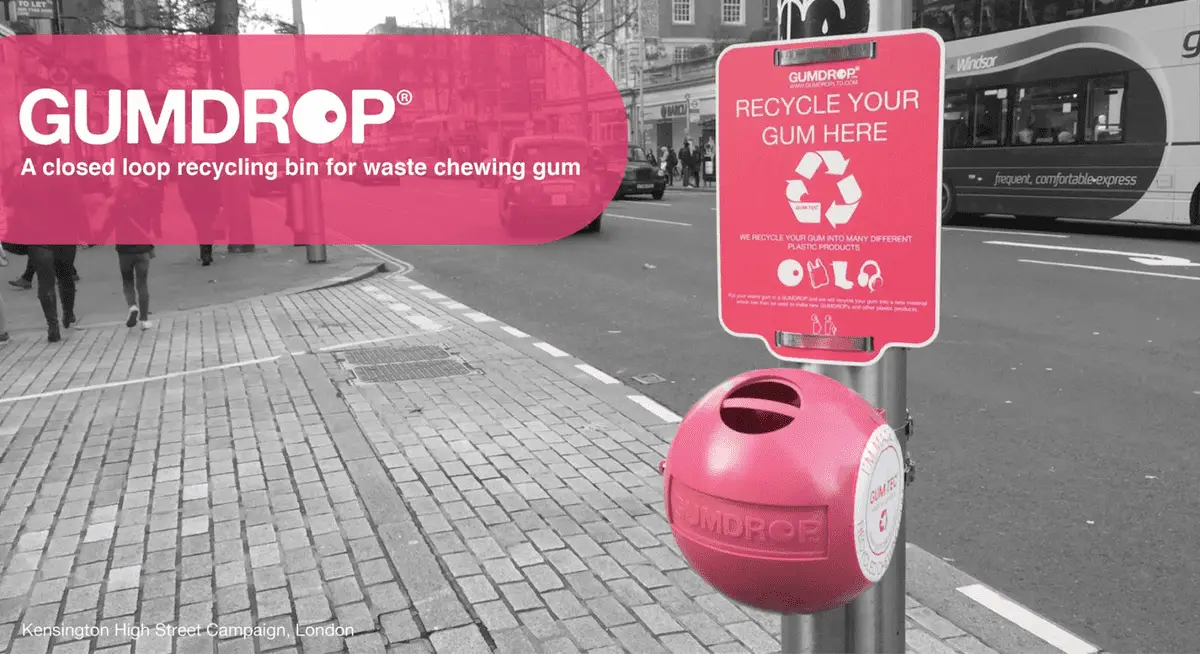
You are probably guilty of throwing chewed gum anywhere on the floor or sticking it somewhere, maybe under the school bench or on the wall. I am guilty of that.
The best way to dispose of gum is to wrap it with a piece of paper or foil before tossing it into the non-biodegradable garbage bin. Avoid throwing used gum on pavements or sidewalks. This way, you can play your part in keeping our streets clean and help save the government some money.
For a long time, dealing with gum litter has been a challenge. Thankfully, companies have started developing ways to recycle chewing gum.
This company called, Gumdrop Ltd, is a first-of-its-kind company in tackling the problem of chewing gum litter. They have receptacles that resemble strawberry-flavored bubble gum bubbles placed strategically in the streets where people can dispose of their chewing gum. They collect chewed gum and recycle it to make new plastic and rubber products such as shoe soles, coffee cups, lunch boxes, pencils, etc.
What Brands of Gum are Biodegradable
Despite gum posing an environmental nightmare, all hope is not lost. You don’t have to stop chewing gum. Some companies are making eco-friendly and biodegradable chewing gum. Here are some of our top choices;
1. Simplygum

They make gums, mints, candy bars, and fruit bites that are vegan, kosher and contain no artificial flavors, sweeteners, or colors. They use tree sap as their gum base instead of the conventional plastic gum base.
2. The Pur Company
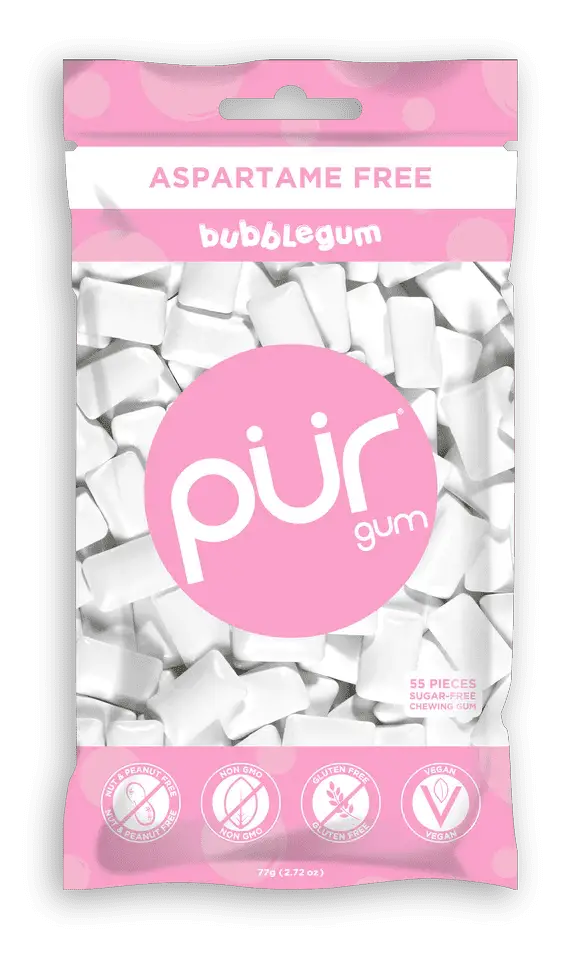
If you are looking for diabetic-friendly gum, this brand is for you. The Pur Company has eight different flavors of gum made with vegan, gluten-free, and non-GMO ingredients and naturally sweetened with 100% xylitol. Their goal is to promote healthy lifestyles by making gum suitable for everyone. The gum is aspartame free too!
3. Glee gum
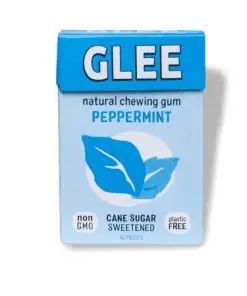
Glee gum produces gum made from sustainably harvested chicle, dehydrated citrus peels, and candelilla wax. All ingredients are natural. What’s more, their packaging is eco-friendly and plastic free. They use recyclable cardboard made of recycled paper.
4. Chicza Organic Mayan Rainforest chewing gum
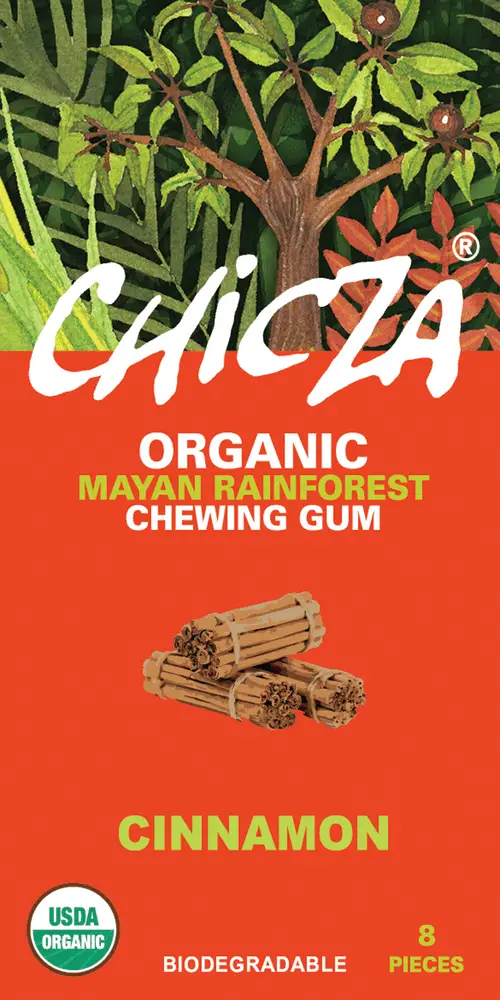
Chicza chewing gum is made from 100% chicle and all organic ingredients, nothing artificial or plastic. The gum is made by a native community called Consorcio Chiclero, who sustainably harvest chicle from living Chicozapote trees. They have mint, cinnamon, mixed berries, and assorted flavors.
5. Project 7 clean chewing gum
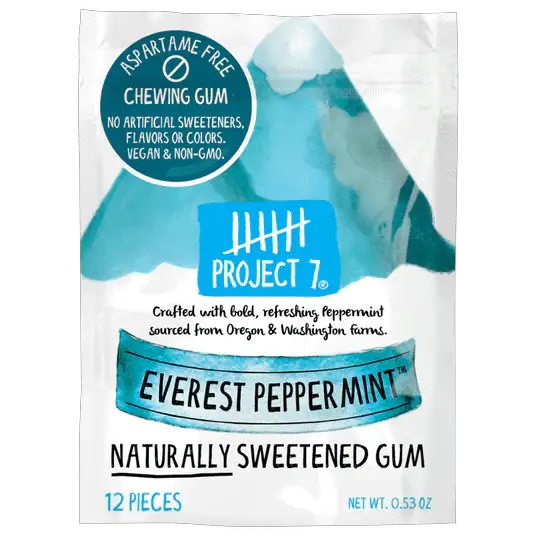
They make low-sugar, keto-friendly, and aspartame-free gummies with long-lasting flavor using plant-based ingredients. Their gum comes in a decent size compared to other brands.
Looking at the above brands, you can see that biodegradable gum is good for the environment and your health as they utilize natural ingredients instead of synthetic materials.
Final Thoughts
To curb the negative environmental impact of chewing gum, some countries, e.g., Singapore, have banned it while others impose fines on people caught littering with gum.
While these measures are great, individual responsibility can achieve better results. So if you have to chew, be a responsible chewer. Look for biodegradable chewing gum and ensure you dispose of it correctly.
You can always chew cloves, mint leaves, or cardamom pods for fresh breath!
Let me know what other habits you have adopted as a responsible chewer.
